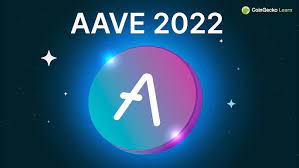AAVE, or African American Vernacular English, is a distinct variety of English that has roots in the African American experience and culture. While often misunderstood or dismissed by mainstream society, AAVE is an important and rich linguistic tradition that carries a wealth of history, identity, and cultural significance. In this article, we will explore aave origins, features, and its impact on modern language, including its increasing presence in digital communication and popular culture.
The Origins of AAVE
AAVE developed from the history of African slaves brought to the United States, who were forced to adapt to English while maintaining elements of their African languages. The influences of West African languages, such as Yoruba, Igbo, and Akan, as well as the historical impact of slavery, segregation, and resistance movements, played a significant role in shaping AAVE. It is not just a set of slang words, but a unique and systematic linguistic structure with its own grammar, phonology, and vocabulary.
AAVE began to take form in the southern states in the early 19th century, where enslaved people had limited access to formal education and were isolated from mainstream English-speaking communities. However, despite its origins, AAVE has continually evolved, and today it is spoken by millions of African Americans across the United States and beyond.
Key Features of AAVE
While AAVE shares many features with standard American English, it also has distinctive linguistic markers that make it unique. These features are found in grammar, pronunciation, and vocabulary, and they contribute to the richness of the language. Some of the key features of AAVE include:
- Phonological Differences (Pronunciation):
- Consonant Cluster Reduction: For example, “best” may be pronounced as “bes.”
- Final Consonant Deletion: Words like “hand” may sound like “han.”
- Vowel Shifts: AAVE often shifts vowels in ways that can be distinct from standard English.
- Grammar:
- The use of “be” to indicate habitual action. For example, “He be working” means “He is regularly working.”
- Zero copula, where the verb “to be” is omitted, such as in “She happy” instead of “She is happy.”
- Double negatives are used for emphasis, as in “I don’t know nothing.”
- Lexical Features (Vocabulary):
- Words in AAVE often have unique meanings or connotations, influenced by cultural contexts. For example, “lit” originally meant “intoxicated,” but in contemporary usage, it means “exciting” or “fun.”
- The creation of new slang terms, like “on fleek” (meaning perfect or well-groomed), often originates in AAVE.
AAVE in Popular Culture
In recent decades, AAVE has gained significant visibility in mainstream culture, particularly through music, television, and social media. Artists like Beyoncé, Jay-Z, Kendrick Lamar, and Cardi B have contributed to the popularization of AAVE through their lyrics, and in doing so, have helped to shape contemporary language trends. The usage of AAVE in music, particularly rap and hip-hop, has led to the widespread adoption of terms and expressions among people from different cultural backgrounds.
However, this mainstream adoption is not always without controversy. Many critics argue that AAVE is often appropriated without respect for its cultural significance. When non-Black individuals or celebrities use AAVE in an attempt to appear “cool” or “authentic,” it can be seen as an act of linguistic exploitation that ignores the history and struggle behind the language. Yet, AAVE’s pervasive presence in pop culture highlights its power to influence and reshape language on a global scale.
AAVE and Digital Communication
The rise of social media and digital platforms has provided new opportunities for AAVE to flourish. Websites like Twitter, TikTok, and Instagram have allowed for the rapid spread of AAVE phrases and expressions, which often go viral in online spaces. Hashtags like #BlackTwitter and #AAVE have brought attention to the role of African American culture in shaping internet discourse.
Digital communication also offers a way for speakers of AAVE to reclaim ownership over their language. By using AAVE in online spaces, people are able to assert their identity and push back against negative stereotypes or stigmas that often surround the dialect. AAVE has become a symbol of cultural pride and resistance in the face of systemic racism.
One key area where AAVE is particularly prominent in digital communication is meme culture. Many viral internet memes and phrases come from AAVE, spreading quickly across platforms and into mainstream usage. Expressions like “finna” (meaning “going to”) or “slay” (meaning “to succeed or perform exceptionally”) have become part of the global lexicon.
The Significance of AAVE Today
AAVE continues to be a vital expression of cultural identity and resilience. It is a testament to the creativity and adaptability of African American communities, who have preserved and nurtured their language through centuries of hardship. As AAVE continues to evolve and permeate digital spaces, it challenges traditional notions of linguistic hierarchies and validates the importance of linguistic diversity.
Understanding and appreciating AAVE is crucial in recognizing the experiences and contributions of African Americans to the fabric of American culture. Linguistic diversity should be celebrated, and efforts to stigmatize or dismiss AAVE should be rejected in favor of a more inclusive and respectful view of language.
In the future, it is likely that AAVE will continue to influence how we communicate, both online and offline. Whether it is in the lyrics of a song, the words in a tweet, or the memes we share with friends, AAVE will remain a defining and powerful force in the shaping of modern language.



